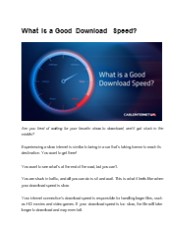The Need for Speed - PowerPoint PPT Presentation
1 / 29
Title:
The Need for Speed
Description:
To know something has moved you have to compare it to something else. Ex ball on table ... On the speedometer. F. SI unit = meters / second. G. Example problems ... – PowerPoint PPT presentation
Number of Views:41
Avg rating:3.0/5.0
Title: The Need for Speed
1
The Need for Speed
- Chapter 11 MOTION
2
- How do you know that something has moved?
3
- To know something has moved you have to compare
it to something else - Ex ball on table
- Relative to the Earth it is not moving
- Relative to the sun it is moving
- (67,062 miles per hour)
4
I. Distance and Displacement
- A. Frame of Reference
- system of objects that are NOT moving with
respect to each other
5
- B. Relative motion movement in relation to a
frame of reference - ex. traveling on a train
6
- C. Distance
- length of path between two points
- If I drive 50 miles northwest to St. Cloud to get
home, what is my distance?
7
- D. Displacement
- How far something has moved from the starting
point and in what direction - as the crow flies
8
- 1. displaced how far it has moved from the
beginning to the end and in what direction - If I drive 50 miles southeast to Rogers in the
morning and then 50 miles northwest to St. Cloud
to get home, what is my displacement?
9
- E. Combining displacement
- 1. Vector
- a quantity that has a direction associated with
it - Shown with arrows
- 2. Add displacements using vector addition
10
- A car goes 5 km east, then 2 km west. What is the
cars displacement?
11
- A car goes 5 km east, then 2 km west. What is the
cars displacement? - 5km
- 2km
- The displacement is 3 km east
12
- Do the activity on p. 330
13
II. Speed
- A. How far something goes in a certain amount of
time - B. Book Definition ratio of the distance an
object moves to the amount of time the object
moves
14
- C. velocity speed with a direction
- A plane is going 200 mph North. Another is going
200 mph West. Do they have the same speed? Do
they have the same velocity?
15
- D. Average speed total distance
- total time
- E. instantaneous speed
- speed at a particular instant
- On the speedometer
16
- F. SI unit meters / second
17
- G. Example problems
- 1. What is the average speed of a runner who
travels 100 m in 10 seconds?
18
- 2. A cyclist rides 5 km in 15 minutes, 2 km in
the next 10 minutes, and 13 km in the next 35
minutes. What is the cyclists average speed? - 3. If a car travels with an average speed of 50
miles an hour for 30 minutes, how far does the
go?
19
III. Acceleration
- A. change in velocity of an object
- B. change in speed, direction or both
- C. acceleration
- final velocity initial velocity
- time
20
- D. Formula
- See board
21
F. Example problems
- 1. A car is at rest at a stoplight. Ten seconds
later it is going 60 kilometers per hour. What is
the cars acceleration?
22
- 2. A biker is stopped at a stoplight. She
accelerates to 10 m/s in 20 seconds. What is her
acceleration?
23
- 3.A car is going 50 mph and accelerates to 70 mph
in 10 seconds. What is its acceleration?
24
- E. SI Units
- meter/second/second
- m/s/s
- m/s2
25
IV. Graphing Motion
- A. Graph is a visual representation of data.
- B. Easier to interpret data
26
- C. Distance vs time graphs
- The slope shows ___________
27
- C. Distance vs time graphs
- The slope shows ___________
- What is slope?
- Rise over run
- So in this case it is distance over time
- Distance over time is _______
28
- D. Speed vs. time graph
- The slope is ___________
- Hint Rise over run
29
- See overhead for sample graphs































